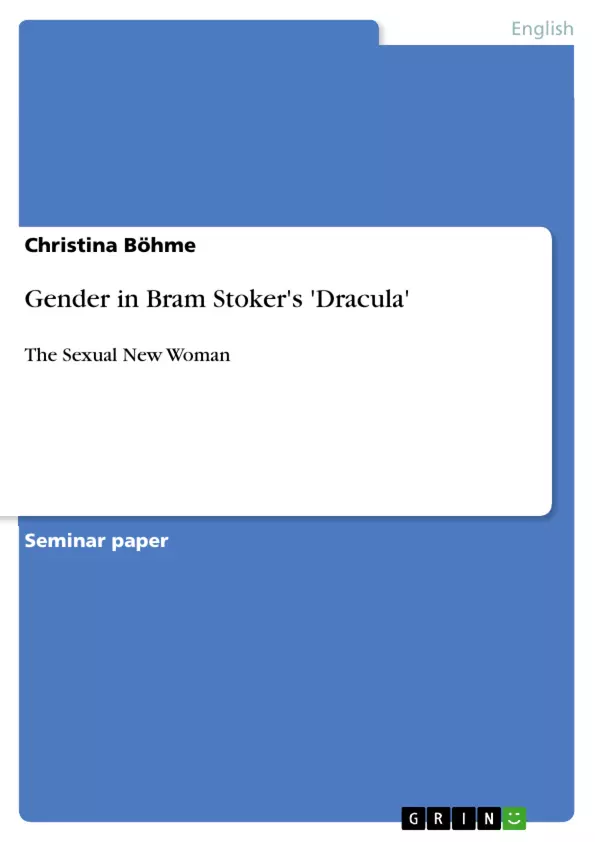This term paper deals with the appearance of the "New Woman" in the end of the 19th century and especially with Stoker's processing of this type of woman in his novel "Dracula". The changes in the roles of men and women and the struggle for adjustment - especially in terms of sexuality - are commented on by a closer examination of the different characters concerning their looks, behavior and emotions.
Table of Contents
- Introduction
- Gender and Sexuality under Historical Aspects
- What is gender?
- Gender roles in the Victorian Age
- The New Woman (after 1880)
- Gender in Dracula
- The Weird Sisters
- The Crew of Light
- Jonathan Harker
- Count Dracula
- Lucy Westenra
- Mina Harker (before Murray)
- Conclusion
Objectives and Key Themes
This term paper analyzes the portrayal of gender in Bram Stoker's Dracula, focusing on the historical context of Victorian England and its social norms. The paper examines how the novel reflects and challenges the evolving roles of men and women in society, particularly in relation to sexuality and independence.- The changing role of women in Victorian society
- The concept of the “New Woman” and her impact on societal norms
- The portrayal of gender and sexuality in Bram Stoker's Dracula
- The connection between vampirism and female independence
- The blurring of gender boundaries and the challenge to Victorian society
Chapter Summaries
Introduction
The introduction situates Bram Stoker's Dracula in the context of fin de siècle England, highlighting the era's social upheaval and the changing role of women. The paper argues that the novel reflects the anxieties and uncertainties surrounding gender roles and sexuality in this period, with vampirism serving as a metaphor for female independence and its potential for both empowerment and subversion.Gender and Sexuality under Historical Aspects
This chapter explores the historical context of gender and sexuality in the Victorian Age. It defines gender as a socially constructed category, examining how Victorian society imposed strict expectations on women, relegating them to a domestic sphere and denying them agency in their own lives. The chapter discusses the “New Woman” movement and its challenge to traditional gender roles, particularly in regards to sexual liberation and the pursuit of education and careers.Gender in Dracula
This chapter analyzes the portrayal of gender in Dracula through the lens of specific characters. It explores how the novel's female characters, including Lucy Westenra and Mina Harker, navigate the pressures of Victorian societal norms and the threat of vampirism. The chapter also examines the male characters, such as Jonathan Harker and Count Dracula, and how they embody different aspects of masculinity and sexuality.
Final del extracto de 17 páginas
- subir
- Citar trabajo
- Christina Böhme (Autor), 2006, Gender in Bram Stoker's 'Dracula', Múnich, GRIN Verlag, https://www.grin.com/document/189990
Leer eBook



